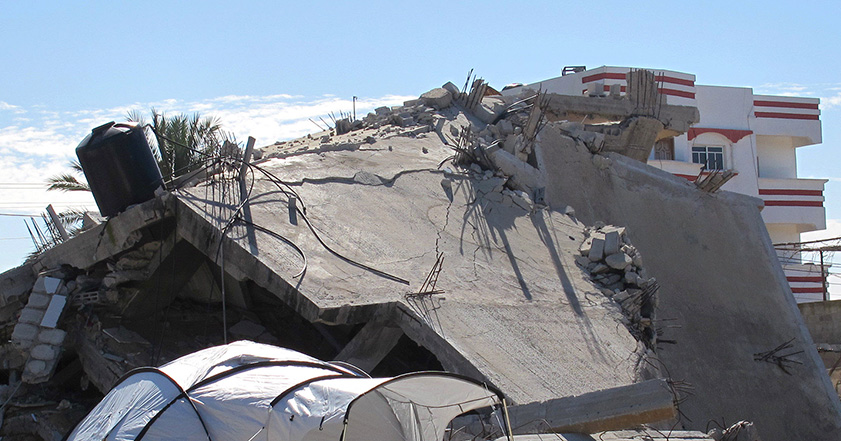We are deeply concerned about the crisis in Gaza and Israel. Thousands of people have died and the death toll is only going to rise. This is a humanitarian crisis. Ordinary people will continue to suffer the most with homes, lives, and livelihoods lost.
International humanitarian law is what governs the conduct of armed conflict. It must be upheld. It means protecting all civilians. That means making sure all civilians have what they need to survive, wherever people have stayed or moved to. It also means that all hostages must be released, immediately and unconditionally.
People are facing the impossible. Nowhere is safe in Gaza. Airstrikes continue in the south and north of Gaza. Advance warnings make no difference to people who can’t evacuate – because they have nowhere to go or are unable to move. Evacuation routes are blocked. There are no assurances for people to return home. There are not enough essential supplies for people to survive – water, food, medical supplies, and fuel.
An immediate cease-fire is needed. The killing of civilians is never acceptable. World leaders cannot standby and pay lip service as civilians, mostly women and children, continue to be killed. Nor must they overlook the lives that will be lost if humanitarian aid does not reach the people who need it. The sheer amount of humanitarian aid needed to avoid further suffering and loss of life cannot be underestimated.
People in Gaza were already reliant on humanitarian aid before the recent escalation in violence. Now even more people are in need. 1.4 million people are displaced in Gaza, yet the trucks of aid crossing its border are just a fraction of what they had been. Significantly more aid is needed and urgently.
People are unable to leave Gaza, find safety, or meet their immediate needs. Yet, humanitarian organisations are having to pause their work, because of the severe lack of water, food, medical supplies, and electricity.
Almost half of all homes in Gaza have been damaged or destroyed. Hundreds of thousands of people are sheltering in UNRWA designated shelters like schools. Thousands more people are on the move, desperately trying to keep themselves and their families safe, but intensive airstrikes are making that near impossible.
We have a long history of supporting people affected by complex crises and conflict. This is a very fast-moving crisis; the humanitarian need is only growing and will inevitably last for years.
The situation is complex, and it is not currently possible to get emergency shelter from outside Gaza to people that need it. It means an immediate response is not viable. However we are actively looking at what a response could look like in the next few months. There are still lots of unknowns, however given the significant number of buildings no longer standing and that many people have lost everything, we know the need for shelter and other essential items will not go away. Over the next few weeks, we’ll be evaluating what people will need over the coming year, which organisations we could partner with, and how we get aid to where it is needed. Once we know all this, we can make a firm decision about responding.
We are continuing to monitor and look at different options to understand whether we can effectively respond in the coming months.
Guarantees are needed by Israel and Hamas to ensure the safe passage of civilians and to allow critical supplies to get to the people who need it.
We stand with the UN in calling for peace and the protection of civilians.
Has ShelterBox provided support in Israel or Occupied Palestinian Territories before?
ShelterBox has supported people displaced in Gaza before. We distributed emergency shelter aid, thermal blankets, and winter clothing to people in rural parts of Gaza in 2015. It took six months of negotiations to deliver aid alongside ACTED. We also responded in 2008 and 2004.
How do we decide when to respond to conflict or disaster?
We use our response criteria to decide if we can respond to a crisis or disaster. You can also learn more about this in our recent blog.

By Alice Jefferson, Head of Emergency Responses
Image at top of the page from ShelterBox’s response in Gaza in 2015

